Arunachal Pradesh
Arunachal Pradesh, nestled in the northeastern region of India, is a land of mesmerizing landscapes and diverse cultures. It boasts snow-capped peaks, lush valleys, and dense forests teeming with rich biodiversity. Home to numerous indigenous tribes, each with its unique customs and traditions, the state is a vibrant tapestry of cultural heritage. Its capital, Itanagar, showcases a blend of modernity and traditional charm. Arunachal Pradesh is also known for its Buddhist monasteries, such as Tawang Monastery, a revered pilgrimage site. With its serene beauty and warm hospitality, Arunachal Pradesh offers a glimpse into the untouched beauty of the Himalayas.
15 best tourist attractions places in Arunachal Pradesh
1). Tawang Monastery
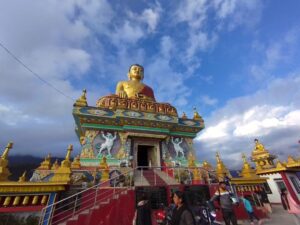
Tawang Monastery, situated in the Indian state of Arunachal Pradesh, is one of the largest and most historically significant monasteries in the region. Perched atop a hill at an altitude of approximately 10,000 feet (3,000 meters), it commands stunning views of the surrounding valleys and snow-capped peaks of the Eastern Himalayas.
Here’s a concise overview:
- Location: Tawang Monastery is located in the town of Tawang, nestled amidst the pristine beauty of the Tawang Valley. This remote location adds to the monastery’s serene and spiritual ambiance.
- History: Founded in the 17th century by Merak Lama Lodre Gyatso, Tawang Monastery belongs to the Gelugpa sect of Tibetan Buddhism. It has a rich history intertwined with the spread of Buddhism in the region and has played a pivotal role in preserving Buddhist teachings and culture.
- Architecture: The monastery boasts a distinctive architectural style, characterized by its towering walls, sloping roofs, and intricately adorned facades. Inside, visitors can explore prayer halls adorned with vibrant murals, statues of Buddhist deities, and a vast library containing ancient scriptures and texts.
- Spiritual Significance: Tawang Monastery holds immense spiritual significance for Buddhists, serving as a center for religious teachings, meditation, and retreats. The serene atmosphere and awe-inspiring surroundings make it an ideal place for spiritual contemplation and introspection.
- Cultural Heritage: The monastery is not only a religious institution but also a repository of the region’s cultural heritage. It hosts various festivals and rituals throughout the year, including the colorful Losar festival and the sacred Torgya festival, which attract pilgrims and tourists alike.
- Accessibility: While reaching Tawang Monastery requires navigating through rugged terrain and winding mountain roads, the journey is rewarded with breathtaking views and a sense of tranquility upon arrival. Visitors can access Tawang by road from nearby towns like Bomdila and Tezpur, or via helicopter services during certain times of the year.
Tawang Monastery stands as a testament to the enduring legacy of Buddhism in the Himalayan region and offers visitors a glimpse into a world of spirituality, culture, and natural beauty.
2). Sela Pass

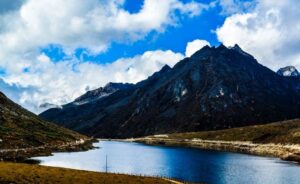
Sela Pass is one of the most breathtaking mountain passes in Arunachal Pradesh, India. Here’s a description:
- Location: Situated at an altitude of around 13,700 feet (4,200 meters) above sea level, Sela Pass is located in the Tawang District of Arunachal Pradesh. It lies on the route between the town of Tawang and the city of Tezpur in Assam.
- Natural Beauty: Sela Pass is renowned for its stunning natural beauty, with panoramic views of snow-capped peaks, glaciers, and alpine meadows. The surrounding landscape is dotted with crystal-clear lakes, including the famous Sela Lake, which remains frozen for a significant part of the year.
- Importance: Apart from its scenic allure, Sela Pass holds strategic importance as it serves as the main route to access the Tawang region from the rest of India. The pass is part of National Highway 13, which connects Tezpur in Assam to Tawang.
- Challenges: The journey through Sela Pass can be challenging due to its high altitude and unpredictable weather conditions. Heavy snowfall and fog are common, especially during the winter months, making travel difficult. However, the views and the experience of crossing the pass are unparalleled.
- Sela Lake: One of the highlights of Sela Pass is Sela Lake, also known as Paradise Lake. The lake, surrounded by pristine white snow, is a sight to behold. Visitors often stop here to admire the serene beauty and take photographs against the backdrop of the majestic Himalayas.
- Buddhist Influence: The area around Sela Pass is also imbued with Buddhist cultural heritage, with several monasteries and stupas dotting the landscape. The influence of Tibetan Buddhism is evident in the colorful prayer flags fluttering in the wind and the prayer wheels adorning the roadside.
- Accessibility: Sela Pass is accessible by road, and the journey from Tezpur to Tawang via the pass is an unforgettable experience. Travelers can hire taxis or use public transport to traverse this scenic route.
Sela Pass offers not only a thrilling adventure for travelers but also a glimpse into the natural and cultural richness of Arunachal Pradesh, making it a must-visit destination for nature enthusiasts and adventure seekers alike.
3). Bomdila Monastery
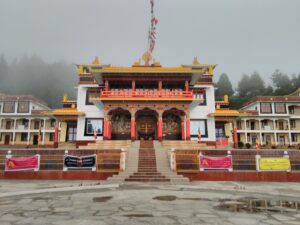
4). Namdapha National Park

Namdapha National Park, nestled in the northeastern state of Arunachal Pradesh, India, is a biodiversity hotspot and one of the largest protected areas in the Eastern Himalayas. Covering an extensive area of approximately 1,985 square kilometers, this verdant sanctuary is renowned for its rich and diverse flora and fauna, earning it the title of a biodiversity hotspot.
The park’s landscape is a mesmerizing blend of lush tropical forests, cascading waterfalls, glistening rivers, and rugged mountainous terrain, creating a haven for a plethora of plant and animal species. It is home to elusive big cats like the Bengal tiger and the rare clouded leopard, along with other iconic species such as the Indian elephant, Asiatic black bear, and the charismatic red panda.

Moreover, Namdapha National Park boasts an impressive avian population, making it a paradise for birdwatchers. Over 400 species of birds, including the rare white-winged wood duck and the beautiful Rufous-necked hornbill, inhabit its diverse ecosystems.
Apart from its ecological significance, the park also holds cultural importance, being inhabited by various indigenous tribes whose traditional lifestyles are intricately connected with the forest.
Visitors to Namdapha National Park can indulge in activities like trekking, wildlife safaris, birdwatching, and camping, offering an immersive experience amidst nature’s bounty and tranquility.
5). Ziro Valley
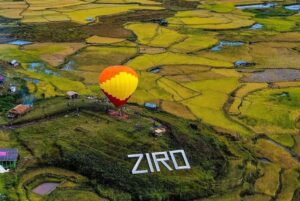
Ziro Valley, nestled in the serene state of Arunachal Pradesh in northeastern India, is a captivating destination renowned for its breathtaking natural beauty and rich cultural heritage. Spread across lush green plains and surrounded by imposing mountains, this valley is a haven for nature enthusiasts and adventure seekers alike.
The valley is adorned with picturesque rice fields, quaint villages, and dense forests, offering visitors a tranquil escape from the hustle and bustle of urban life. Its pristine environment is home to a diverse array of flora and fauna, including rare species like the clouded leopard and the Hoolock gibbon, making it a paradise for wildlife enthusiasts and conservationists.
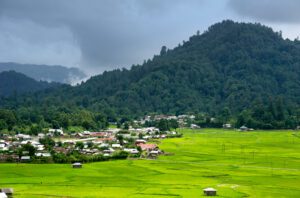
Apart from its natural splendor, Ziro Valley is also celebrated for its vibrant indigenous culture. The Apatani tribe, who inhabit the valley, are known for their unique traditions, colorful festivals, and intricate handloom and handicrafts. Visitors have the opportunity to immerse themselves in the local way of life by exploring traditional villages, interacting with friendly locals, and participating in cultural events.
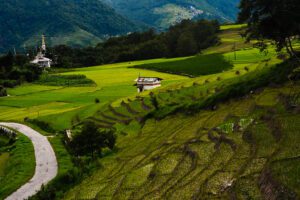
With its serene landscapes, rich biodiversity, and vibrant cultural tapestry, Ziro Valley offers a truly unforgettable experience for those seeking to reconnect with nature and discover the cultural heritage of northeastern India. Whether trekking through verdant forests, marveling at ancient tribal customs, or simply soaking in the tranquility of the surroundings, a visit to Ziro Valley is sure to leave a lasting impression on the hearts and minds of travelers.

6). Dirang Valley
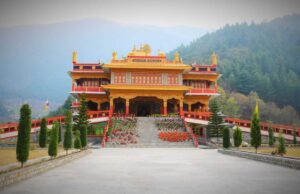
Dirang Valley, nestled in the picturesque state of Arunachal Pradesh in northeastern India, is a breathtaking destination renowned for its natural beauty and cultural richness. Surrounded by towering Himalayan peaks, lush greenery, and meandering rivers, Dirang Valley offers a serene escape from the hustle and bustle of city life.
The valley is adorned with verdant forests, vibrant meadows, and cascading waterfalls, making it a paradise for nature lovers and adventure enthusiasts alike. Trekking trails crisscross the landscape, leading to hidden gems like the Sangti Valley, famous for its orchid sanctuary and breathtaking vistas.
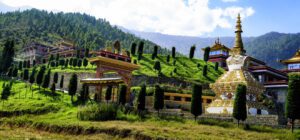
Apart from its scenic splendor, Dirang Valley is also steeped in culture and tradition. The local Monpa community adds to the valley’s charm with its unique customs, festivals, and handicrafts. Visitors can immerse themselves in the rich cultural tapestry by exploring ancient monasteries like the Dirang Dzong and interacting with the warm and hospitable locals.
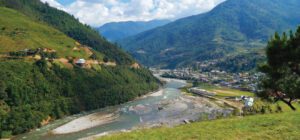
The valley also serves as a gateway to the Tawang region, home to the majestic Tawang Monastery and the enchanting Sela Pass. Whether it’s witnessing vibrant festivals, indulging in adventure activities, or simply soaking in the tranquility of nature, Dirang Valley offers an unforgettable experience for every traveler.
7). Pakhui Wildlife Sanctuary

The Pakhui Wildlife Sanctuary, also known as Pakke Wildlife Sanctuary, is located in the northeastern state of Arunachal Pradesh, India. Established in 1965, it covers an area of approximately 862 square kilometers and is part of the larger Pakhui Tiger Reserve, which was declared a tiger reserve in 2002. The sanctuary is situated in the foothills of the Eastern Himalayas and is characterized by its diverse flora and fauna.
Flora: The sanctuary is home to a wide variety of plant species, including tropical and subtropical forests, bamboo groves, and grasslands. The vegetation includes species such as sal, teak, oak, bamboo, and orchids, providing a diverse habitat for wildlife.
Fauna: Pakhui Wildlife Sanctuary is renowned for its rich biodiversity, particularly its population of tigers, which are the apex predators in the region. Other notable species found here include Asian elephants, leopards, clouded leopards, sambar deer, barking deer, gaur (Indian bison), and numerous species of birds and reptiles. The sanctuary is also known for its significant population of hornbills, including the rare and endangered Great Indian Hornbill.
Activities: The sanctuary offers opportunities for wildlife safaris, birdwatching, nature walks, and trekking. Visitors can explore the sanctuary through guided tours conducted by forest department officials or local guides. The Pakhui River, which flows through the sanctuary, also offers opportunities for angling and river rafting.
Conservation: Conservation efforts in Pakhui Wildlife Sanctuary are focused on protecting the diverse ecosystems and wildlife populations within the reserve. Measures include anti-poaching patrols, habitat restoration, community-based conservation initiatives, and ecotourism development aimed at providing sustainable livelihoods for local communities while promoting conservation awareness.
Pakhui Wildlife Sanctuary is a significant biodiversity hotspot in Arunachal Pradesh, offering visitors a chance to experience the natural beauty and wildlife diversity of the Eastern Himalayan region.
8). Gorichen Peak

Gorichen Peak, standing tall at an impressive altitude of 6,488 meters (21,286 feet), is the highest peak in the Indian state of Arunachal Pradesh. Nestled within the serene landscapes of the Eastern Himalayas, this majestic peak holds immense significance both for mountaineers and the local Monpa people, who consider it sacred.
Located in the Tawang district, Gorichen Peak offers a challenging yet rewarding expedition for seasoned climbers. Its snow-clad slopes and rocky terrain provide a thrilling adventure for those seeking to conquer its summit. The climb demands physical endurance, technical skill, and acclimatization to high altitudes, making it a coveted destination for experienced mountaineers.
Beyond its mountaineering allure, Gorichen Peak is deeply intertwined with the cultural fabric of the region. It is revered by the Monpa tribe, who consider it the abode of the protective deity, Gorichen. Rituals and prayers are offered to seek blessings for a prosperous harvest and protection from natural calamities.
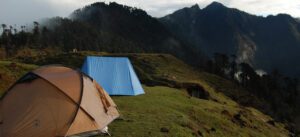
The surrounding area is blessed with breathtaking natural beauty, including alpine meadows, dense forests, and glistening glaciers, making it a paradise for nature enthusiasts and photographers. Gorichen Peak stands not only as a physical landmark but also as a symbol of spiritual reverence and natural splendor in the heart of Arunachal Pradesh.
9). Sangti Valley
Sangti Valley is a picturesque valley nestled in the West Kameng district of Arunachal Pradesh, India. It’s renowned for its stunning natural beauty, serene atmosphere, and diverse flora and fauna. Here’s a detailed description:
Location: Sangti Valley is located about 15 kilometers away from Dirang, a small town in Arunachal Pradesh. It’s situated at an altitude of around 6,000 feet above sea level, making it an ideal destination for those seeking cooler temperatures and breathtaking mountain landscapes.
Natural Beauty: The valley is surrounded by lush green forests, snow-capped peaks, and meandering rivers, offering a visual treat for nature lovers and photographers alike. The Sangti River flows through the valley, adding to its charm and tranquility.
Flora and Fauna: Sangti Valley is home to a rich variety of flora and fauna. The dense forests are inhabited by numerous species of birds, including the endangered Black-necked crane, which migrates to the valley during the winter months. The valley also supports a diverse range of wildlife, such as Himalayan black bears, red pandas, and musk deer.
Cultural Heritage: In addition to its natural attractions, Sangti Valley is also known for its rich cultural heritage. The valley is inhabited by the Monpa tribe, who have their own unique customs, traditions, and festivals. Visitors to the valley can immerse themselves in the local culture by interacting with the friendly Monpa people and experiencing their way of life.
Activities: Sangti Valley offers a wide range of activities for visitors to enjoy. Nature enthusiasts can go trekking through the surrounding forests, birdwatching along the riverbanks, or simply relax and take in the scenic beauty of the valley. Adventure seekers can also indulge in activities like river rafting, camping, and angling.
Best Time to Visit: The best time to visit Sangti Valley is during the spring and summer months (March to June) when the weather is pleasant and the valley is in full bloom. However, the winter months (November to February) also have their own charm, especially for birdwatchers keen on spotting the migratory Black-necked cranes.
Sangti Valley is a hidden gem in the northeastern state of Arunachal Pradesh, offering visitors a perfect blend of natural beauty, cultural heritage, and outdoor adventure.
10). Parshuram Kund
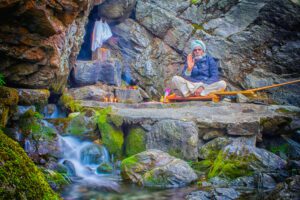
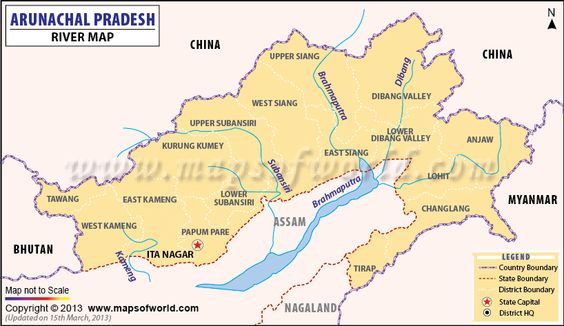




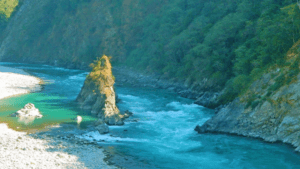


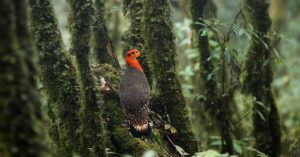
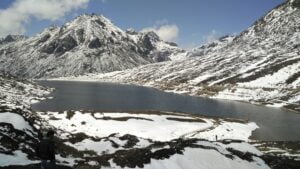


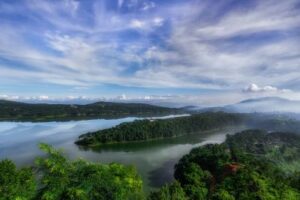
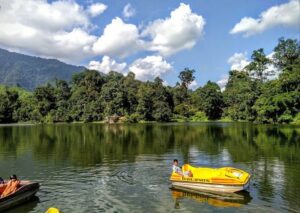

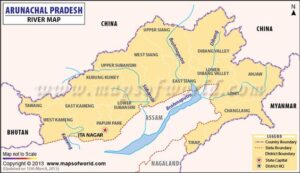
1 thought on “15 best tourist attractions places in Arunachal Pradesh”